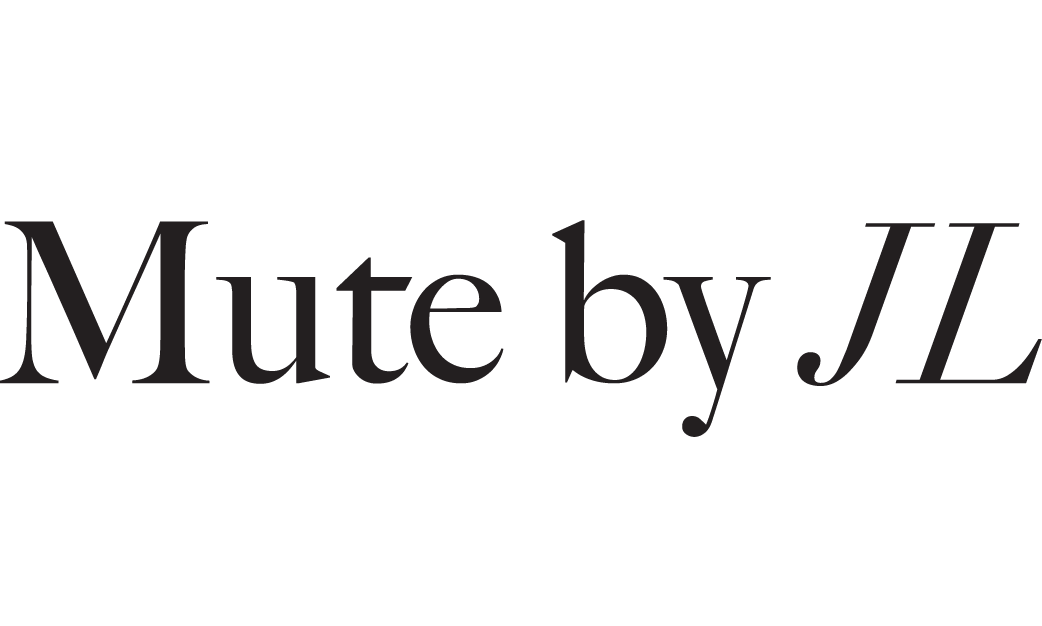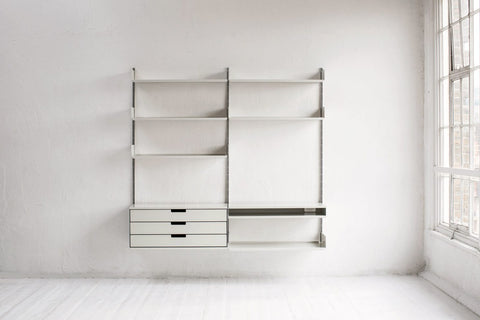10 PRINCIPLES OF GOOD DESIGN ... INNOVATIVE, USEFUL, AESTHETICALLY PLEASING, UNDERSTANDABLE, UNOBTRUSIVE, HONEST, LONG LASTING, THOROUGH, ENVIRONMENTALLY FRIENDLY, AND WITH AS LITTLE ‘DESIGN’ AS POSSIBLE.

You might be surprised to discover that rather than business or design, Mark Adams, managing director of Vitsoe, studied zoology. “Biology excites me,” he says. “At a detailed level, it’s all about how an organism works, but at the macro level, you have to look at entire ecosystems. That’s what makes me tick.” Even more intriguingly, Adams does not view Vitsoe as a furniture company. “We are a service business that just happens to make some products,” he explains. When you put these two pieces of information together, Vitsoe starts to make a lot more sense. “What you have inside here,” he tells me as we walk around the company’s Camden HQ, “is an ecosystem; a place where multiple details are constantly interacting.”

Vitsoe makes and sells furniture designed exclusively by Dieter Rams, offering just three products; the 606 Universal Shelving System, the 620 Chair Programme, and the 621 Side Table. Although widely considered design classics (the 606 Universal Shelving System is in the permanent collection of the Museum of Modern Art in New York, and the 620 Chair Programme is in the collections of both the V&A and the Design Museum), no two orders ever look quite the same. The emphasis at Vitsoe is on adaptability and longevity, not just outward appearances. The Vitsoe logo – the company’s name in simple sans serif majuscule with a final ligature ‘Œ’ – is a rare sight at the Camden warehouse and office complex, and the product itself is deliberately anonymous. Adams likes to think of it as invisible furniture. “That’s why people want it,” he says, “because it is so self effacing. It provides a blank canvas against which your life can change and transform.”

Adams recounts the story of a recent order received from a couple in New York. Both had been married before, and were about to move in together. Realising they both owned the off-white 606 Universal Shelving System, they got back in touch with Vitsoe, who were able to easily merge the two systems to fit their new apartment. “This type of request happens all the time,” he says, “few of us realise how much our lives are going to change.” The system is designed to be “one of those increasingly rare things in your life that you can rely on for the rest of your life.” The Vitsoe customer, according to Adams, is someone who “thinks beyond the end of their nose.”

Vitsoe abides by Dieter Rams’s 10 principles of good design, namely, that their products must be innovative, useful, aesthetically pleasing, understandable, unobtrusive, honest, long lasting, thorough, environmentally friendly, and have as little ‘design’ as possible. The 606 Universal Shelving System consists of an aluminium E track, from which shelving, cabinets, and tables can be suspended. It is available in a limited number of sizes and colours, all depending on the needs of the customer. No tools are needed to assemble it, and the simplicity of the system means that the individual components can be rearranged and interchanged easily. The 620 Chair Programme, a surprisingly comfortable, boxy leather chair, designed by Rams in 1962, also has flexibility and a long lifespan at its core. It swivels, connects up with others of its kind to make a sofa, and is easily reupholstered, when the time comes. The 621 Side Table, dating from the same year, is simplicity itself; a discreet, injection moulded plastic side table, available in two colours and two sizes.

Dieter Rams and Niels Vitsoe met in 1957, when Rams was just 27 years old. The pair founded Vitsoe two years later in Frankfurt, with Rams continuing to work for electrical giant Braun, where he held the position of head of design from 1961 until 1995. In the early 1980s, a young Mark Adams made the decision to bail out of a well paid London headhunting job, going directly against his father’s advice to keep furniture as a hobby. He became a shop assistant at a small West End design shop where he had first seen a Dieter Rams simple black shelving unit. Shortly after, the shop owners went bankrupt, and Adams, still in his early 20s, found himself looking around the wreckage, wondering what he could salvage. He decided to fly to Frankfurt for the weekend to introduce himself to Niels Vitsoe, to whom he had only previously spoken on the phone, and returned from Germany with an agreement to import and sell Vitsoe furniture in the UK, where it was little known. Over the next seven years, he watched the company – still headed by an ageing Niels Vitsoe – falter. By 1993, it was in financial trouble, and Adams was invited to take a 51 per cent stake in the business. Despite significant efforts, it was forced to close. Refusing to give up on the company, Adams shifted its entire manufacturing base to his home shores across the English Channel in 1995.

Since then, he has worked hard to streamline the business and make the design the best it can be. Every component is sourced from within the UK, and if something can be reused, it is. Even the cardboard packaging is cut to a specific size so that it can be returned to the warehouse and sent out again. The same goes for the product. Although the appearance of the shelving unit hasn’t deviated from Rams’s original, Adams tells me that it has undergone at least 90 changes since 1995. Today, every single order goes out worldwide directly from the Camden headquarters. “In many ways, we’re becoming a small automotive business,” Adams says, “buying in the best components from the best suppliers and then putting them together. They just happen to come out as furniture, rather than as a car.” The company has an international team of planners who act as consultants and advisors to customers, as well as stores in London, New York City, Los Angeles, and Munich. Vitsoe furniture is not available to buy anywhere else, other than online, where they make the bulk of their sales. This direct approach has been integral to the regeneration of the company. “Our margins are under half the industry norm,” Adams tells me. “The best way of being able to design well is to keep an intimacy with the customer. The minute you put in a middleman, all that honesty and integrity within the relationship breaks down.”

Next year, Vitsoe are moving out of their increasingly cramped north London headquarters into a larger space in Leamington Spa in the West Midlands. The location has been carefully selected for its strong history of manufacturing and its close proximity to the UK’s main rail freight terminal. Containers will be transported straight from trains to the port, and then onto ships bound for destinations across the world. The new building has been designed over many years with a quintessentially Vitsoe mindset; the system that lies behind it has been the priority. Conceived as a living experiment, it is also where Adams’s long term goal of taking the business entirely into employee ownership will be realised.
In a world where short life cycles and inbuilt obsolescence have become the norm, Vitsoe is a reactionary force extending beyond furniture. “Vitsoe’s purpose,” Adams points out, “is to allow more people to live better, with less, that lasts longer. It’s not about furniture or Rams. What Dieter and I talk about most of all is how Vitsoe moves beyond Dieter Rams and, possibly, beyond furniture completely.” I ask if Vitsoe is more an ethos. “Absolutely” Adams replies. “There is a huge opportunity for us to change people’s way of living and way of thinking. I think we are in a period of massive change, and the whole beauty of Vitsoe is that it will accommodate whatever the future throws at it.” Adams’s final words sum up not only this iconic brand, but also his relationship to it succinctly: “At Vitsoe, rather than guessing what the future holds, we just make sure we can adapt to change.”
- WORDS: Lily Le Brun
- PHOTOS: Rich Stapleton
- ORIGINAL POST: Readcereal

